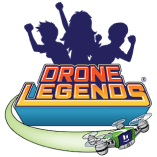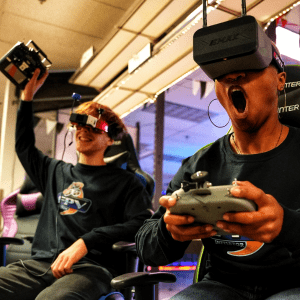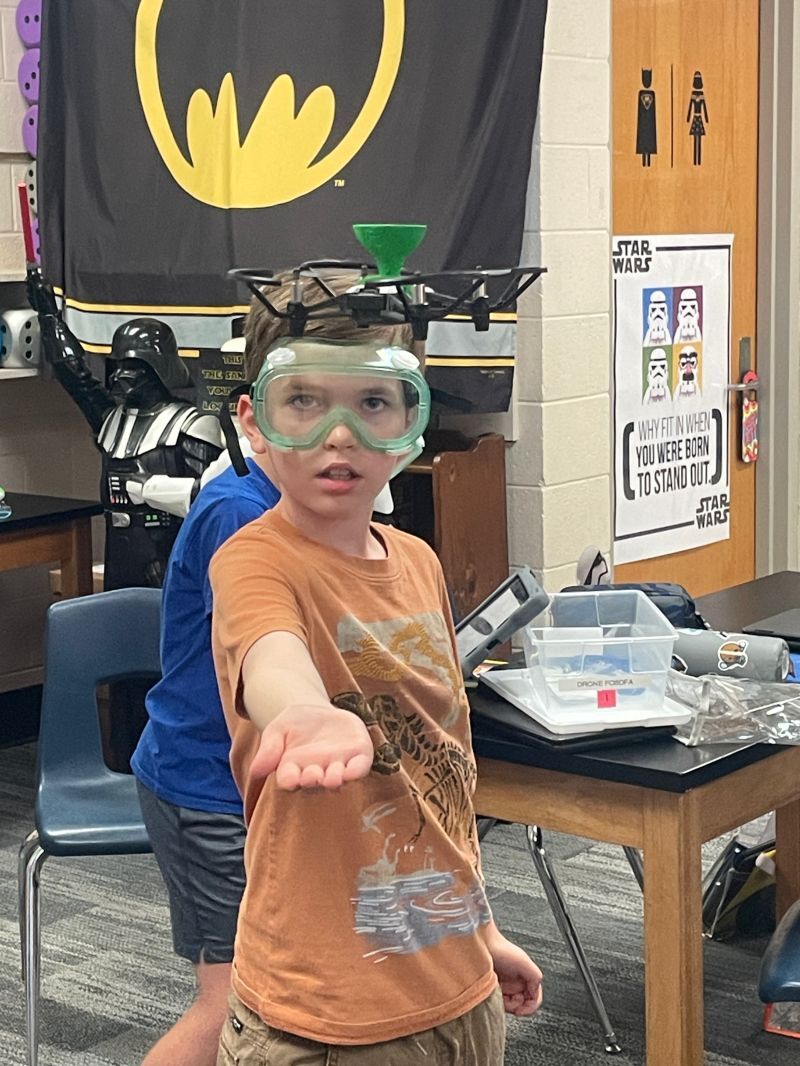Students can’t wait to get their hands on drones— it doesn’t matter if it’s inside the classroom or right outside their home. Test, fly, launch, land: drones are an amazing tool for fun, hands-on learning for all ages.
How can students explore useful, career-ready skills using drones? Here’s a peek at how drone projects can ignite STEM learning like never before.
How to Use Drones in Student Projects
There are so many cool ways to engage students with drone education. Set them up in pairs or teams, assign individual tasks, or compete between classrooms to come up with the best drone operation on campus.
There are a few things you need before you run a drone learning project:
- Student drones (drone models for kids)
- Know your local drone flight rules
- Clear drone safety instructions for students
- Fly zone markers
- Drone project objectives
- Student drone operation manuals
Students can complete drone projects assigned by a teacher or come up with their own science experiments. Drone class projects are a great way to involve students of all learning styles to understand science, technology, engineering, and math (STEM)!
Science Drone Projects
From astronomy to farming, student drones pose real-life models of vital aircraft used in scientific fields today. Combine drones with existing science projects to bring a new element of wonder to the class. Use drones to demonstrate important frameworks like data collection, observation, and testing hypotheses.
Here are some ideas for drone science projects:
- 3D Printing Drone Models: Depending on the grade level, students can incorporate 3D printed objects to attach to drones for flight. Students can use 3D-printed NASA models to create a drone obstacle course. Eager to 3D print a drone? Students can print and build their own or use CAD software to design extra drone parts.
- Drone Agriculture Management: Introduce students to agronomy and aerial mapping with drones. Assign students to use cameras or NIR (near-infrared light) technology to assess different moisture levels in nearby crops. If flying over crops isn’t doable, you can observe plants in a school garden or shrub space.
- Fire Rescue Drones: Set up a science project where students work together to put out wildfires with drones. Students calculate flight distance, maximum water payload, and battery life to navigate over the fire area and back to their base safely.
Technology Drone Projects
Drones of all shapes and sizes open up the world of tech for any learner. Many students prefer moderate to extensive use of internet technology in the classroom today. The latest educational tech devices from tablets to interactive whiteboards can be seen in classrooms across the country. Soon, the next common tech on campus will likely be drones.
How can students use drone projects to further their technology skills?
- Using Drones with AI: Some drones come with artificial intelligence features already in place (automatic hover mode or “headless mode”, for example). But other cool AI functions can be added to drones, such as object counters, object trackers, or autopiloting sensors.
- Programmable Drones: Students can program drones for partial or total autonomous flight. Using code blocks or computer programming software, students establish set flight paths: back and forth, spiraling patterns, base-to-base, or an obstacle course. They can also program deliveries using drones.
Engineering Drone Projects
Engineers and builders of the future will be using drones regularly. Students interested in engineering can learn hands-on methods of drafting, assembling, repairing, and piloting different types of drones and their uses.
Apply drone education in engineering projects, such as:
- Drone Building and Design: Students can design and build drones using drone kits or common materials. This may take trial and error as students must calculate exact measurements and electrical wiring. Drone building is a great project for problem-based learning and critical thinking.
- Construction Mapping: Have students form a map or model of local buildings using drone 3D imaging. Get students to calculate external and internal measurements of the building such as windows, floors, and interesting architectural structures.
Math Drone Projects
Drones are practical tools for measurement in math class, and learning how to properly fly a drone requires some math skills upfront. Drones help students visualize and practice new math concepts, observing them in real-time. Using drones during math projects is a great way to aid long-term learning.
To use drones in math projects, here are some examples:
- Measuring Velocity: Students can measure the speed of the drone, or use it as a tool to measure other objects. See if kids can determine the object velocity when a friend is riding a bike, flying a kite, or throwing a ball.
- Recording Sports Plays: Drone footage of sports plays can be used to measure exact outcomes on the field, or replay difficult plays like fouls or interceptions.
- Elementary Math Challenges: Get elementary students involved in drone projects. Help them use drones to measure the distance between two points in the classroom. Let them practice the X and Y-axis through the drone controllers and calculate the space between one flight zone and the next.
Creative Drone Projects
Drones can be used in the arts, too! From aerial videography to stunning underwater photos of marine life, unmanned aerial vehicles (UAVs) innovate impressive career fields beyond the amazing world of STEM.
Here are two ways to get creative with drone projects:
- Drone Photography: Challenge students to capture aerial photos of their school, neighborhood, or distant locations. Bonus if their images identify something that needs to be improved, such as local riparian habitat conditions or the roof of the school auditorium.
- Drone Footage Creative Writing: Assign different teams of students to capture drone footage in a designated amount of time. Instruct them to zoom in and out of various locations and objects at least twice. Then, show each video to the class and have each student write a creative story about what they see.
Student Drone Projects for Problem-Based Learning
Whether you’re an educator or someone who loves using drones to help kids learn, you’re in the right place! The Drone Legends curriculum supports problem-based learning using drones in a standards-ready, STEM-focused way.
We know that Inside Every Child Lives a Legend™, and drones are one way to make this mission a reality. Get everything you need for planning the best drone projects for students. Reach out to get started with Drone Legends today.




